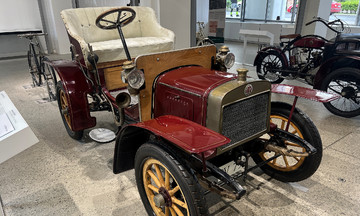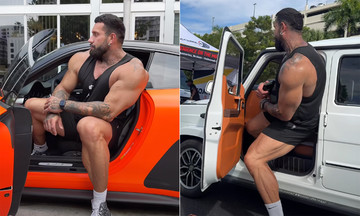"Many drivers on long journeys, especially in mountainous areas or crossing bridges, don't wear seatbelts," says Manh Quan, a truck driver with 10 years of experience in the southwestern region of Vietnam. "They believe it's easier to escape in an emergency if they're not strapped in."
This viewpoint is common among Vietnamese truck drivers. On social media and in comments sections of road safety articles, many drivers offer various justifications for not wearing seatbelts, ranging from the low speed of trucks to claims of difficulty breathing, impaired handling, or hindered escape in brake failure or rollover situations. However, according to international road safety research, this is a dangerous misconception.
Low speed doesn't equal safety
A common belief is that "trucks are heavy and don't travel at high speeds, so seatbelts are unnecessary." However, data from the US National Highway Traffic Safety Administration (NHTSA) and the European Transport Safety Council (ETSC) proves otherwise.
2022 NHTSA data reveals that seatbelts reduce the risk of death by 45% in heavy trucks and 60% in cars. A 2024 ETSC report confirms that unbelted truck accident victims have a significantly higher risk of death compared to those properly restrained. The World Health Organization (WHO) also emphasizes that not wearing a seatbelt significantly increases the risk of death or serious injury, even in low-speed collisions.
Seatbelts work by restraining inertia, preventing the body from being thrown forward or sideways. While low-speed impacts in heavy trucks might cause less cabin deformation than in cars, the force exerted on the driver is still enough to cause serious injuries without a seatbelt. Thus, seatbelts protect occupants across all speed ranges.
Incorrect seatbelt use: The main cause of "restriction"
Truck drivers often cite discomfort, breathing difficulties, or slowed reflexes as reasons for not wearing seatbelts. In reality, incorrect usage is often the culprit. A common mistake is pre-buckling the seatbelt, sitting down, and then putting the strap across the chest. This transforms the three-point belt (protecting shoulder, chest, and hips) into a two-point restraint, concentrating impact force on the abdomen or chest, negating its distribution and injury reduction capabilities.
Furthermore, improper use creates the feeling of restriction and hinders escape. When worn correctly, unbuckling the seatbelt automatically retracts the strap. Incorrectly worn, drivers cannot escape by simply unbuckling; they have to loosen the strap and "crawl out" from under it.
More seriously, incorrect use can cause the strap to press against the neck instead of the shoulder, causing discomfort on long drives. Many trucks allow drivers to adjust the belt height on the B-pillar and the seat position for optimal shoulder and chest placement. Correct usage ensures comfort and maximizes protection.
"Jumping out of the vehicle during an accident": A fatal reflex
Another argument is that "in brake failure situations, it's easier to jump out if not wearing a seatbelt." Experts deem this impractical. Data from the NHTSA and a 2015 University of Michigan study show that ejection from the cabin in truck rollovers or collisions leads to a high fatality rate of 65%. Occupants who remain inside and are properly restrained have a much lower risk of death and serious injury due to the belt's restraint and the cabin's protective frame.
 |
A truck driver not wearing a seatbelt is caught on camera. *Image: Traffic Police Department* |
At speeds of 60-80 km/h, the driver's body also travels at that speed. Jumping out doesn't reduce inertia; it results in impacting the ground at the same velocity, leading to fatal injuries or being run over by other vehicles.
Besides being physically improbable, "jumping out" is considered professionally unethical. When the driver leaves the seat, the multi-ton truck becomes an uncontrolled hazard to surrounding vehicles and people. The driver's responsibility is to maintain control until the last moment by downshifting, using engine braking, or choosing a less dangerous impact point, not abandoning the vehicle for self-preservation.
In critical situations, every second and action counts. Wearing a seatbelt correctly is not optional; it's the simplest and most effective way to increase survival chances and prevent the truck from becoming a danger to others.
Ho Tan










